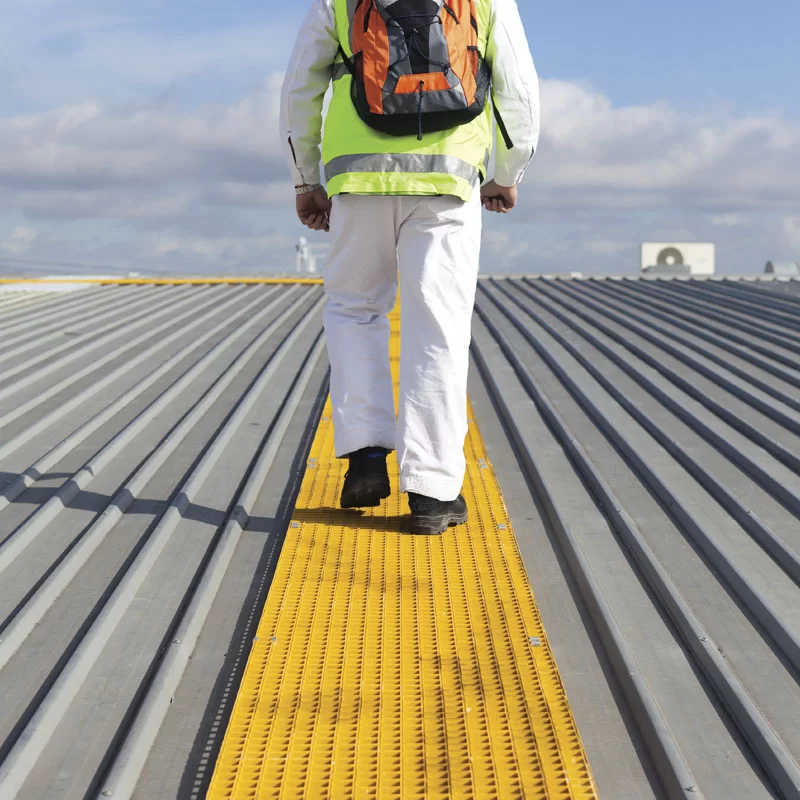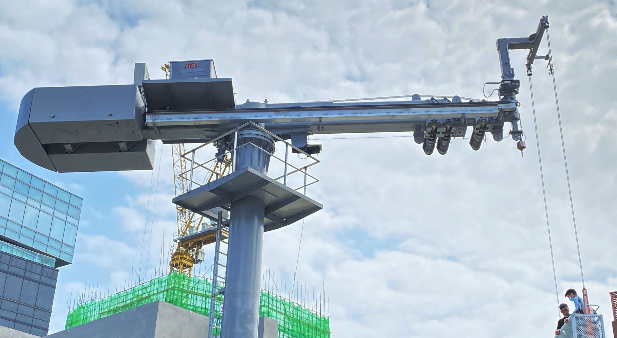Understanding Catwalk Systems in the Philippines
Catwalk systems provide elevated access pathways that enable safe and efficient movement across areas that are difficult to reach on the ground. In the Philippines, they are widely used in industrial plants, warehouses, entertainment venues, and construction projects where workers need to navigate above machinery, production lines, or large crowds. A catwalk typically consists of a sturdy platform, protective guardrails, and supportive structural elements designed to carry heavy loads. Whether built for maintenance teams inside a power plant or for lighting technicians in an arena, these walkways help prevent accidents while enhancing operational efficiency. They are engineered to handle foot traffic, tools, and equipment without compromising stability. Local climates—from humid coastal areas to urban industrial zones—require catwalks to resist corrosion and remain dependable over many years. Selecting the right design and installer ensures these structures meet both immediate and long-term needs.
Importance of a Professional Catwalk Installer
Hiring a certified catwalk installer in the Philippines is essential for projects that demand structural integrity and adherence to safety regulations. Professional installers understand how to assess site conditions, select proper materials, and implement designs that meet national and international safety standards. An inexperienced team can create hazards such as weak joints, uneven platforms, or unstable supports that lead to costly accidents or legal issues. Skilled installers also help clients avoid unnecessary maintenance expenses by ensuring each component is built to last. They coordinate with engineers and architects to guarantee that the finished catwalk integrates seamlessly into the facility’s layout. In industries where heavy machinery operates around the clock, dependable installation protects both workers and equipment from potential harm. Choosing a reputable service provider reduces risks and gives property owners confidence that the structure will perform as intended for years to come.
Materials and Design Options for Catwalks
The materials selected for a catwalk significantly influence its durability and safety. Galvanized steel is a common choice due to its excellent corrosion resistance, making it ideal for humid Philippine environments. Aluminum offers lightweight strength, while stainless steel provides a sleek finish suitable for public spaces. Composite materials can be used in specialized applications where weight reduction is critical. Professional installers evaluate factors such as load capacity, exposure to weather, and budget constraints before recommending a specific material. Design flexibility is equally important; catwalks can be tailored to unique building geometries, featuring anti-slip flooring, strategic handrail placement, and even aesthetic finishes that complement architectural styles. A well-designed catwalk enhances workflow efficiency and worker confidence, whether used in a factory, warehouse, or entertainment venue. Proper planning ensures that every element, from platform width to guardrail height, complies with Philippine building codes and international best practices.
Step-by-Step Installation Process
A professional catwalk installer in the Philippines follows a meticulous process to ensure structural reliability. The first step involves a detailed site assessment to understand space constraints and load requirements. Structural engineers then conduct analyses to determine the appropriate design and material specifications. Fabrication teams prepare components with precision, cutting and treating metals or composites to match project blueprints. On-site installation follows strict safety protocols, including proper anchoring to walls or ceilings and secure assembly of all platform sections. Each stage is supervised by experienced technicians who verify alignment and stability. Once the catwalk is in place, a comprehensive inspection is performed to confirm that every joint, fastener, and railing meets or exceeds safety standards. This organized process ensures the final structure is both functional and durable, capable of supporting daily use in demanding industrial or commercial environments.
Safety Standards and Philippine Regulations
Safety remains the top priority when installing elevated walkways. In the Philippines, catwalk construction must comply with national building codes and occupational safety guidelines that protect workers and visitors alike. Reputable installers also draw on international standards, such as those set by OSHA and ISO, to enhance the reliability of their projects. These regulations cover essential aspects like load-bearing capacity, guardrail height, and slip resistance. Regular inspections are mandated to ensure that wear and tear does not compromise structural integrity. A professional catwalk installer documents all stages of the project to prove compliance and to simplify future maintenance. By adhering to both local and global benchmarks, property owners avoid penalties and ensure the well-being of everyone who uses the elevated pathway. Consistent safety practices not only protect people but also safeguard investments by extending the lifespan of the structure.
Choosing the Right Catwalk Installer in the Philippines
Selecting a trusted catwalk installer requires careful evaluation. Facility owners should verify certifications, years of experience, and specialized training in elevated walkway construction. Reviewing completed projects and client feedback offers valuable insight into an installer’s capabilities. A strong portfolio reflects both technical skill and attention to detail. Comprehensive services—including design consultation, fabrication, and maintenance—indicate a provider capable of managing complex projects. Consider these key questions before making a decision:
Does the installer provide detailed engineering plans and load calculations?
Are warranties and after-sales support included?
Can the team handle custom designs for unique site requirements?
What safety protocols are followed during installation?
How quickly can they respond to maintenance or repair needs?
Asking these questions helps property managers and business owners partner with professionals who prioritize safety, quality, and long-term value.
Cost Factors and Budget Planning
Understanding the cost of a catwalk installation is vital for effective project planning. Expenses typically include material procurement, labor, engineering fees, and necessary permits. The overall price varies depending on platform size, structural complexity, and environmental challenges such as coastal exposure or high humidity. High-quality materials like stainless steel may raise initial costs but reduce long-term maintenance expenses. Clients should also factor in potential upgrades, such as anti-slip surfaces or custom finishes, which enhance both functionality and appearance. A professional installer provides transparent quotations that outline every component of the budget. Clear communication about costs helps avoid unexpected expenses and ensures that safety is never compromised. Investing in quality installation today saves money in future repairs, making it a practical choice for industrial plants, warehouses, and commercial facilities across the Philippines.
Maintenance Tips for Long-Lasting Catwalks
Proper maintenance extends the lifespan of any catwalk system. Routine inspections should be scheduled to check for corrosion, loose bolts, or structural wear. Cleaning the surface regularly prevents buildup of dirt and moisture, which can accelerate rust on metal platforms. For installations near coastal areas, protective coatings may need reapplication to withstand salt-laden air. Professional maintenance services can identify early signs of stress or fatigue before they become serious problems. Facility managers should maintain detailed records of inspections and repairs for compliance with safety regulations. Upgrades such as replacing worn guardrails or installing new anti-slip panels further enhance safety. A proactive approach to maintenance ensures that the catwalk remains secure, efficient, and visually appealing for years, safeguarding both workers and equipment.
Frequently Asked Questions (FAQ)
How long does a typical catwalk installation take?
Timeframes vary based on size and complexity, but most projects are completed within a few weeks after design approval and material preparation.
What is the recommended load capacity for industrial catwalks?
Load requirements depend on use, but a professional catwalk installer in the Philippines calculates exact specifications to meet building codes and operational needs.
Are custom designs possible for unique building layouts?
Yes, skilled installers specialize in tailoring catwalks to specific architectural requirements, including curved pathways or multi-level structures.
What certifications should a professional catwalk installer hold?
Look for installers with relevant Philippine construction licenses and training in OSHA or ISO safety standards to ensure compliance and reliability.
How often should a catwalk be inspected for safety compliance?
Annual inspections are standard, but high-traffic or harsh environments may require more frequent checks to maintain optimal safety.
Takeaway
Partnering with a reputable catwalk installer in the Philippines guarantees that elevated walkways are safe, durable, and compliant with all necessary regulations. From selecting the right materials to ensuring proper installation and ongoing maintenance, professional expertise protects workers and property alike. Careful planning and routine upkeep extend the life of the structure while minimizing costly repairs. Whether for industrial facilities, commercial venues, or construction sites, investing in a trusted installation team provides lasting peace of mind and operational efficiency.











